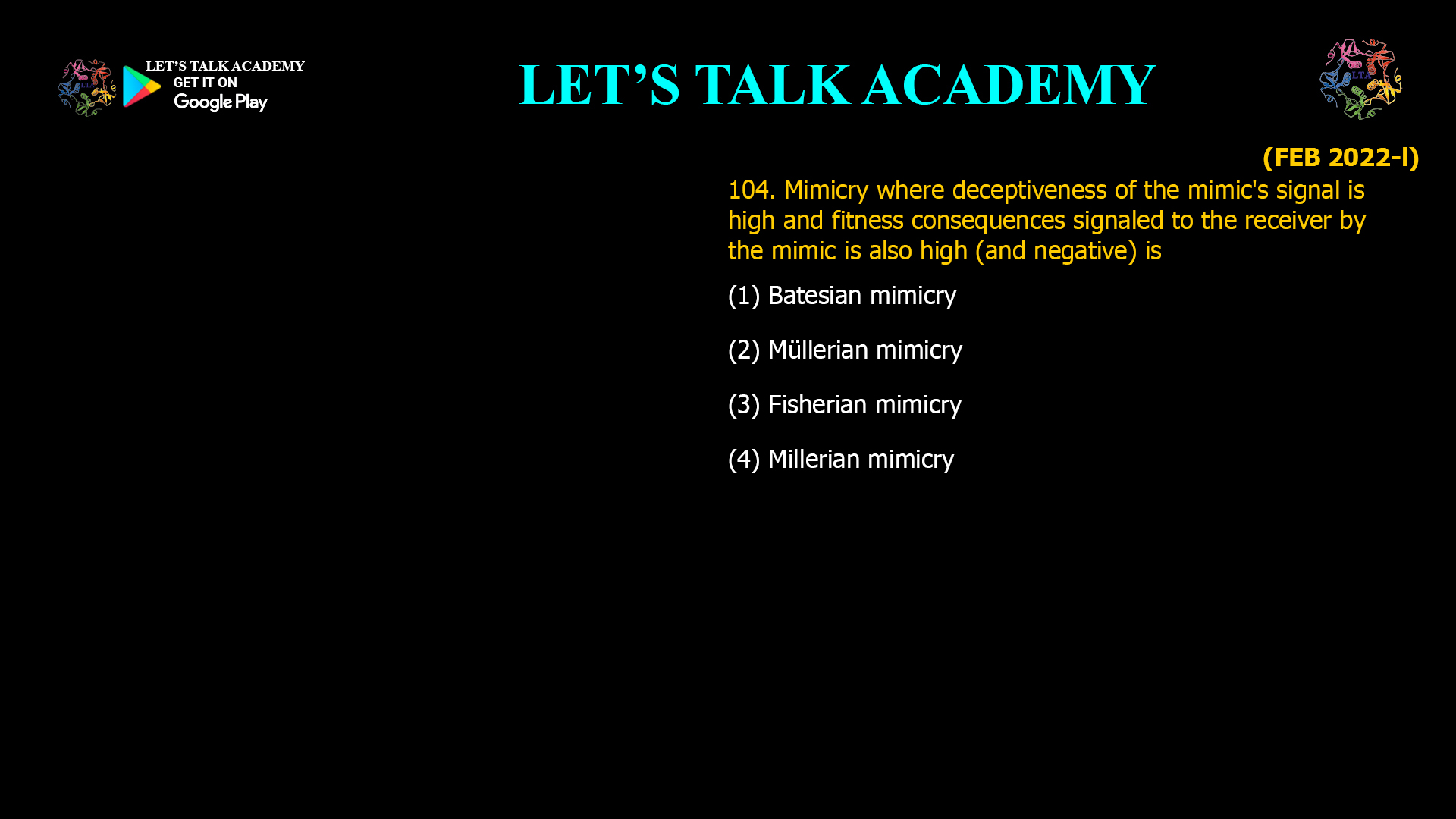- Mimicry where deceptiveness of the mimic’s signal is high and fitness consequences signaled to the receiver by the mimic is also high (and negative) is
(1) Batesian mimicry (2) Müllerian mimicry
(3) Fisherian mimicry (4) Millerian mimicryWhat Defines Batesian Mimicry?
Batesian mimicry occurs when a harmless or palatable species (the mimic) evolves to closely resemble a harmful, toxic, or unpalatable species (the model). This resemblance is so convincing that predators are often fooled into avoiding the mimic, believing it to be dangerous. The mimic benefits by escaping predation, while the predator—if it does attack and discovers the mimic is actually harmless—may suffer wasted effort, lost feeding opportunities, or even learn to ignore warning signals, which can be costly if it later attacks the genuinely harmful model.
Key Features of Batesian Mimicry:
-
High Deceptiveness: The mimic’s signal is highly misleading, causing the receiver (predator) to make incorrect decisions.
-
High Negative Fitness Consequences: If the predator ignores the signal and attacks, it risks encountering the genuinely harmful model in the future, which can result in injury, illness, or death. If it learns to ignore the signal after repeated encounters with harmless mimics, its fitness is negatively impacted.
Why Not Müllerian or Other Mimicry Types?
-
Müllerian mimicry involves two or more harmful or unpalatable species resembling each other. Here, the signal is honest, and both the mimic and the model are genuinely dangerous. The fitness consequences for the receiver (predator) are consistent and reinforce avoidance, but the signal is not deceptive.
-
Fisherian and Millerian mimicry are not standard terms for this scenario in evolutionary biology.
Real-World Examples
-
King Snake and Coral Snake: The harmless king snake mimics the highly venomous coral snake. Predators that avoid the coral snake due to its warning coloration will also avoid the king snake, even though it poses no threat.
-
Hoverflies and Wasps: Hoverflies, which cannot sting, mimic the appearance of stinging wasps, deterring predators through deception.
Evolutionary Implications
Batesian mimicry creates an evolutionary arms race. As mimics become more common, predators may start to ignore the warning signals, reducing the effectiveness of the mimicry for both the mimic and the model. This dynamic maintains a delicate balance in nature, ensuring that mimicry remains a powerful but not foolproof survival strategy.
Conclusion
The type of mimicry where the mimic’s signal is highly deceptive and the fitness consequences for the receiver are also high (and negative) is Batesian mimicry. This form of mimicry highlights the complex interplay between deception, survival, and evolutionary pressures in the natural world.
-




1 Comment
Kajal
October 13, 2025Batesian mimicry